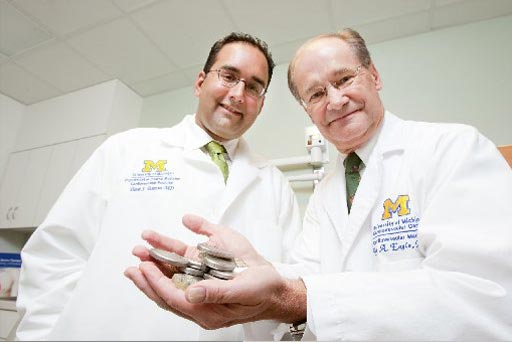Donated Pacemakers Can Be Safely Reused Post-Sterilization
By HospiMedica International staff writers
Posted on 13 Nov 2017
A new study highlights a practical way to provide functioning pacemakers to the multitude of patients that cannot afford a new one.Posted on 13 Nov 2017
Researchers at the General Hospital of Mexico (HGM; Mexico City) conducted a study that included 33 patients (average age 72 years, 52% female) with a pacing indication who could not afford a new pacemaker or a battery change. The patients received a reused device donated by relatives of deceased patients and which had a minimum of six years of battery life. After confirming that the pacemakers were functioning correctly, they were washed with enzymatic soap, autoclaved for 38 minutes, and retested after sterilization.

Image: Pacemakers to be refurbished and used in third-world countries (Photo courtesy Scott Galvin / University of Michigan Photo Services).
Indications for the donated pacemaker were sinus node dysfunction in ten patients (30%) and advanced atrioventricular block in 23 patients (70%). Of the 33 patients, 25 received a reused pacemaker, and eight patients that already had a pacemaker received a reused battery. During the implant procedure there was one hematoma, which resolved without further complications. There were no complications during the six-month follow-up period. The study was presented at the 30th Mexican Congress of Cardiology, held during November 2017 in Guadalajara (Mexico).
“According to government reports, more than half of the population in Mexico does not have access to social security or private insurance that covers a pacemaker implant, and 44% live in poverty,” said lead author cardiologist Carlos Gutiérrez, MD. “With a thorough and standardized sterilization process, explanted pacemakers with a battery life of more than six years can be reused safely. This practice could be implemented in many other centers that have equipment to sterilize and reprogram pacemakers. We also need to promote the donation of pacemakers with little use from deceased patients.”
The U.S. Food and Drug Administration (FDA) forbids the implantation of used pacemakers within the United States and severely questions its safety, calling it an objectionable practice due to potential sterilization issues, especially in the terminals. There are no federal prohibitions, however, on harvesting used pacemakers for implantation abroad. In India, for example, a new pacemaker costs USD 2,200 to USD 6,600, well beyond the means of many patients.
Related Links:
General Hospital of Mexico














